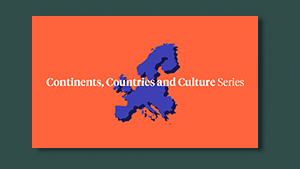Malta Culture, Customs, and Traditions

Just a short hop away from Sicily lies the beautiful island nation of Malta. For centuries, this idyllic destination has held visitors spellbound with its mesmerizing architecture and awe-inspiring beaches. Its stunning beauty is enough to attract people from near and far; however, what really sets it apart is the one-of-a-kind cultural blend that exists here.
Over time, influences from the Phoenicians, Romans, Arabs, and Knights of Saint John have come together in perfect harmony, giving rise to vibrant cuisines and customs that remain proudly preserved today. We explore Malta’s culture, customs, and traditions below.
Malta Population
 Malta may be tiny in size, but it packs a punch when it comes to its impact on the global stage. Representing just 0.01% of the world’s population and boasting an impressive 535,582 inhabitants densely concentrated across one square kilometer alone – Malta is nothing short of extraordinary.
Malta may be tiny in size, but it packs a punch when it comes to its impact on the global stage. Representing just 0.01% of the world’s population and boasting an impressive 535,582 inhabitants densely concentrated across one square kilometer alone – Malta is nothing short of extraordinary.
The largest city in Malta is Birkirkara, home to 21,676 people, followed by Qormi with 18,230. Its modest population has undoubtedly made it known around the world despite the small size of its island nation.
Languages of Malta
Malta is a one-of-a-kind gem, boasting two official languages – Maltese and English. The former has an enchanting amalgamation of Semitic influences intertwined with Italian, Sicilian, and even some aspects of English.
Locals are usually quite adept in their native tongue but also rely on the convenience that comes with speaking English for commercial or academic activities. It’s no surprise many inhabitants can speak Italian too, due to Malta’s close past relationship with Italy.
Religion in Malta
Catholicism has heavily influenced Maltese culture for centuries, with 82.6% of its population identifying as Catholic according to the 2021 census. St John’s Co-Cathedral serves as just one example of Malta’s strong Christian heritage; churches, chapels, and other places of worship are abundant throughout this island nation.
Despite such religious prevalence, however, it remains open to people from all faiths – constitutionally protecting each citizen’s right to practice any religion (be it Anglican, Protestantism, Orthodox Christianity, or Islam) without bias or discrimination.
Family Life in Malta
Family life in Malta is something that many cherish and hold dear. Extended family ties are held in high esteem, with multiple generations often living together or nearby; this strengthens the bonds between relatives.
Gatherings and celebrations take place regularly, where members of the family come together for support. Religion also plays a large part; most people practice Roman Catholicism, which allows religious customs to be passed down from one generation to another; plus, it provides an excuse for them all to come together on special holy days.
Maltese Art and Architecture

Malta’s art and architecture have a remarkable history stretching back thousands of years, resulting in an artistic fusion between cultures like Phoenicians, Romans, Arabs, Normans, and Spaniards with British influences over the centuries. A style like this is truly unique.
Limestone is heavily featured in Maltese architecture; buildings take on a distinctive warm golden hue that can be seen across iconic sites such as Megalithic Temples, Mdina Cathedral, and St John’s Co-Cathedral. This eclectic cultural background is further reflected through celebrated artists like Mattia Preti (an Italian Baroque painter) and Anton Inglott, both renowned worldwide for their work born of Malta’s multifaceted heritage.
Maltese Food
Maltese food is a delightful mix of Mediterranean flavors with influences from Italy, North Africa, and the Middle East.
Popular dishes are simple yet flavourful; they usually include fresh ingredients and use traditional cooking techniques. For example, Pastizzi, these flaky pastries can be filled with either ricotta cheese or mushy peas; Rabbit Stew, which requires slow cooking to achieve maximum taste. Ftira resembles pizza but is distinctly Maltese in its makeup and Lampuki Pie, typically contains fish (found abundantly around Malta’s waters) alongside tomatoes, onions, capers, and olives all encased within an oven-baked pastry crust.
Maltese Fashion
Malta’s fashion culture is an enchanting combination of traditional and modern influences, depicting the island’s affluent past and diverse personality. With a Mediterranean setting, the Maltese style blends distinctive aesthetics drawn from its Phoenician, Roman, and Arab origins with elements inspired by European and North African fashion trends, all melded together to create something unique.
The people here have an inclination for elegant, yet lively clothing pieces adorned with ornate lacework details as well as vivid hues and lightweight fabrics – perfect for Malta’s balmy climate. Traditional garments such as the ‘Għonnella’ are making a comeback in recent years, adding that extra dash of nostalgia to contemporary wardrobes everywhere.
Doing Business in Malta
Doing business in Malta offers a unique strategic opportunity within the European Union. Located at an intersection of Mediterranean nations, this small country boasts political stability and financial services that are second to none. Its pro-business policies give entrepreneurs and corporations a cause for celebration; competitive tax regimes alongside well-established regulatory frameworks create an attractive environment that further sweetens the deal.
With double taxation treaties, Malta’s geographical advantage creates seamless pathways into international trade and investment possibilities. The Maltese government’s effort towards innovation and emerging technologies (especially fintech and gaming) has also turned it into a hub of innovative technology.
Maltese Holidays and Celebrations
Malta’s national holidays are steeped in history, representing momentous events. Meanwhile, public holidays tend to be rooted more in religious customs, with various festivals celebrated nationwide. The most popular holidays and celebrations are as follows:
- New Year’s Day (January 1)
- Feast of St. Paul’s Shipwreck – commemorates the shipwreck of St. Paul in Malta in the year 60 AD (February 10)
- Feast of St. Joseph (March 19)
- Good Friday (dates vary)
- Easter (date vary)
- Freedom Day (March 31)
- Worker’s Day (May 1)
- Sette Giugno – commemorates the events on June 7 after the Maltese rioted against the British, whose troops fired into the crowds and killed four people (June 7)
- Feast of St. Peter and St. Paul (June 29)
- Feast of The Assumption of the Virgin Mary (August 15)
- Feast of the Immaculate Conception (December 8)
- Republic Day (December 13)
- Christmas Day (December 25)
Common Maltese Language Expressions
The Maltese language is the only Semitic tongue written in Latin script – and its pronunciations, which have Arabic roots, can be tricky for those with a European linguistic background to get their tongues around. Below are some of the most common Maltese language expressions:
- Yes: Iva
- No: Le
- Hello: Ħello
- Welcome: Merħba
- Good morning: Bonġu
- How are you? Kif int?
- What is your name? X’jismek?
- My name is…Jisimni…
- Nice to meet you: Għandi pjaċir
- Please: Jekk jogħġbok
- Thank you very much: Grazzi ħafna
- I don’t understand: Ma nifhimx
- Do you speak English? Titkellem bl-Ingliz
- Goodbye: Ċaw
- Cheers: Saħħa!
Translation for the Maltese Market
Translating content for the Maltese market requires both linguistic precision and an understanding of cultural context. The quirks of this unique blend of Semitic and Romance influences play a vital role in Malta’s identity, making it essential to consider local preferences, expressions, and sensitivities when crafting translations.
Furthermore, its bilingual population – with many proficient in English – adds complexity to the translation landscape. With the help of GPI’s professional translators, you can effectively communicate with this vibrant Mediterranean community while remaining accessible to English speakers. This requires maintaining a balance between preserving the integrity of Maltese words and phrases while connecting with them on relevant terms.
